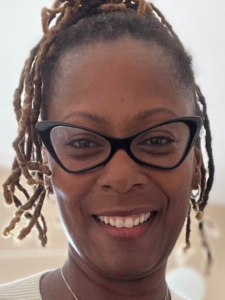
Paula Becker recalls one day when she was looking at TikTok and saw an educator sharing about teaching on Outschool. Paula was intrigued. She did a little research about Outschool and ended up applying to teach.
Fast forward two years, and she now teaches 1-on-1 and ongoing classes for learners ages 6 to 11, mostly on her chosen teaching niche: multiplication.
During her time as a part-time online educator, she has honed her skills and her curriculum. She shared what has worked well for her in building her virtual teaching business.
Communicate proactively
Paula routinely reaches out to parents to share each learner’s progress and potential next steps. She usually takes notes regarding what each learner did well in her group classes and where she might be able to offer more support in a 1-on-1 class.
In a private class, she can really zero in on individual needs. By concentrating her messages to families on how she can provide more help in a 1-on-1 class, marketing her classes comes naturally.
Paula also contacts parents at the start of ongoing tutoring sessions to thank them for enrolling their child in her class and to find out specific goals for that learner. She asks those parents if their child will have time to do practice sheets at home. That way she can get an idea of how to best tailor lessons for that child.
Build an adaptable curriculum
When Paula started teaching multiplication, she had a basic curriculum. “That first year teaching that lesson, I got bored,” she says. “I’m thinking if I’m getting bored… a learner who has been in my class two, three, four times — they must be getting bored. And I want to bring them back.”
So Paula began tweaking her lessons, adding possible extensions and different ways to approach the subject. “Depending on who I have in the class, whether it be one student or several students, ” she says, “I can pull up different things, whether it be a puzzle, a game we could play as a group, a game we could do 1-on-1, or a game that they’re doing by themselves.”
Having a wide variety of tools also means she can find the right one for each situation. For instance, if someone has joined her class from the car or doesn’t have paper and pencil, she can use the Zoom whiteboard for annotation or another tool like flashcards.
“I can do different things in the class where I can still get 110 percent from that learner and see that they’re enjoying themselves, learning, gaining confidence, and getting to where they need to get in their learning journey,” she says.
Sometimes in her initial communication with a parent, Paula will learn that a child has a learning disability or is anxious — something that gives Paula some idea of what to expect when she meets that learner. Other times, she doesn’t learn much about a student beforehand.
“It’s not a guessing game but kind of a guessing game. So I kind of have a lot in my bag, then I can change it depending on the learner,” Paula says.
Personalize lessons for each learner
Paula adjusts her teaching to fit the needs of each learner who joins her classes.
She shared how she had one learner in a private class who would say a string of what appeared to be random numbers when asked for the answer to a math problem. When the learner paused on a number, that signaled that it was the answer to the problem. Paula says she needed to pay close attention to catch the correct answer.
“They would take a breath, then I’d know, ‘Okay, they’re done. That’s the answer to my question.’ So that’s how we did the whole session,” she says. In a 1-on-1 class, an educator has the opportunity to focus solely on one student’s needs and learning style.
Paula taught another learner whose parent wanted the child to learn a specific amount of material in six weeks. To do this, the parent signed up the learner for tutoring sessions three times a week. Paula divided the curriculum into sections so the learner could accomplish the goal.
She also gave the child short games to play with their parents at bedtime or when they were brushing their teeth. “You really can’t leave it all to class,” Paula says. “Some of it has to be afterward.”
That learner is now back in school and coming to 1-on-1 meetings with Paula every other week. “Looking at my notes from where we were toward the beginning to where we are now, it’s night and day,” she says. “You’d think they’d forget or need some reminders, but no, they are on top of it.”
The student has even developed their own ways of simplifying math problems now, and Paula is a fan.
“They took the basis of what I’ve taught them and have kind of done it in their own way, and it’s a different method. I said to this learner: ‘That’s fantastic… That shows you’re doing tremendous learning.’ “
Connect with other educators
Paula sometimes reads about the experiences of other educators on Outschool via the Outschool Teacher Hub on Facebook. From listening to those stories and through Outschool educational offerings, she has been able to gather ideas to expand the reach of her classes. That’s how she developed some of her own practices, such as recording learner progress and sending that to parents afterward.
Through the Teacher Hub, Paula also made a connection with another educator on Outschool who lives somewhat near her in Canada. The two of them share ideas about teaching on Outschool and have even been able to get together in person.
Outschool also offers Communities of Practice where educators can connect with others who teach similar subjects and age groups.
Experiment and be kind to yourself
Paula wasn’t initially sure if she’d like teaching in an online environment, but she was surprised to find that she does enjoy it. The learners are great, she says, and she likes discovering what part of the U.S. or other countries they are taking class from.
Just as she leaped into teaching virtually, Paula recommends that educators getting started on Outschool, or who want to add 1-on-1 classes, take risks too.
“Keep on trying different things, and keep building those class lessons in terms of getting approvals for those. You never know what’s going to stick so be patient.”
Paula encourages educators to give themselves grace. “Put some thought into what you want to teach,” she says, “and maybe don’t bite off a huge chunk. Just start in one area.” If educators start with one topic they can teach successfully, they can build on that and make more robust lessons.
Then, give it time, she says. “I’m approaching my two-year anniversary and I know there’s more for me to do on the platform.”
Watch the video below to see the full interview with Paula.

